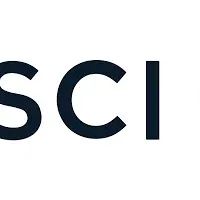
Aberdeen Investments U.S. Closed-End Funds Distributions Announced for Shareholders
Recent Update on Aberdeen Investments U.S. Closed-End Funds
The Aberdeen Investments U.S. Closed-End Funds have recently made headlines by announcing distribution payments for their shareholders. As of June 30, 2025, the Funds, which include ASGI, HQH, HQL, IFN, THQ, and IAF, declared distributions based on their respective holdings as of June 23, 2025. This move is designed not just to reward current investors, but to affirm the financial stability and commitment of the funds they represent.
Overview of Distribution Payments
On June 30, 2025, the Funds paid varying distributions to shareholders. Here is a summary of the per share distributions for each fund:
- - ASGI: $0.2100
- - HQH: $0.5400
- - HQL: $0.4300
- - IAF: $0.1200
- - IFN: $0.4100
- - THQ: $0.1800
It is worth noting that some funds, particularly HQH, HQL, IAF, and IFN, provided distributions based on a different schedule, accommodating shareholders who recorded before May 22, 2025.
Understanding Distribution Policy
Each fund has adopted a distribution policy aimed at providing a consistent return to investors, which is composed of current income, realized capital gains, and if necessary, a portion of paid-in capital. This strategy is particularly important as it ensures investors feel secure in their holdings, even amid market fluctuations. Representative distributions were automatically converted into newly issued shares unless the shareholders specified a cash payout preference. The prices for these shares were calculated based on their net asset value (NAV), ensuring fairness and transparency in the process.
Implications for Shareholders
For shareholders, the option to receive dividends in the form of reinvested shares presents a potential growth opportunity. As a result, instead of cash, reinvested dividends can significantly contribute to overall investment growth if the market conditions are favorable. Those wishing to receive cash dividends had to notify their brokerage or the relevant custodial services to ensure their preference was honored by the distribution date. This setup requires active engagement from shareholders, emphasizing the importance of understanding the terms associated with their investments.
Estimated Sources of Distributions
Under the regulations set out by the Investment Company Act of 1940, the funds must estimate their sources of distributions, breaking it down into categories such as net investment income, short-term capital gains, long-term gains, and return of capital. For instance:
- - ASGI claimed that its $0.2100 distribution included 12% from net investment income and 41% from return of capital.
- - HQH indicated that 48% of its payout stemmed from long-term capital gains.
These percentages shed light on how the funds are managing their portfolios and the sustainability of the distributions being offered. Investors must keep in mind that a return of capital occurs when distributions exceed income, indicating that some investment capital is being returned to shareholders.
Finalizing Distribution Values
The final characterization of distributions for tax purposes will only be confirmed at the end of the fiscal year, with Form 1099-DIV sent to shareholders detailing how these distributions should be reported for income tax compliance. The estimates provided by the Funds are meticulously calculated based on accepted accounting principles, enabling a clear picture of how each distribution is funded.
Potential Investor Impact
Investors should be aware that these distributions can affect the net asset value of each fund. A reduction in net assets may trend to an increased expense ratio, meaning annual expenses for the shareholders could be higher if fund performance does not scale accordingly. The Board of each Fund maintains the right to amend or terminate the distribution policy, a factor to consider closely for current and potential investors.
Conclusion
Overall, the release of distribution payment details by the Aberdeen Investments U.S. Closed-End Funds signals a strong commitment to returning value to shareholders, as well as maintaining robust financial health. Investors are encouraged to remain engaged and remain informed as the fiscal year progresses.
Topics Financial Services & Investing)










【About Using Articles】
You can freely use the title and article content by linking to the page where the article is posted.
※ Images cannot be used.
【About Links】
Links are free to use.